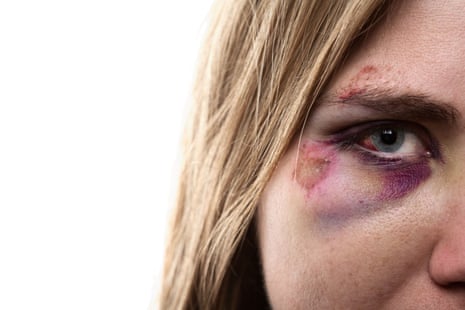Eventually you get to a point in mid-adulthood, having digested a few newspapers and muted a few politicians, when you start to wonder: do cities actually want their women to die? Otherwise, why take these backward steps, cutting services so that more and more women’s refuges are forced to close? Backward steps – no, it’s more like being dragged through shrubland into a dimmer, darker place.
Sunderland is about to become the first UK city without a single domestic violence refuge. The bleakness of this is exhausting. The knowledge that even if a woman in Sunderland finds the courage, cash and energy to leave the partner that hits her, soon there will be nowhere for her to go. The chances are she will end up on the streets (St Mungo’s reports a third of the women they work with say domestic violence contributed to their homelessness) or in a B&B, floundering with no support, no advice on how to begin a life alone, and of course that itch, that feeling that she will always be listening for steps behind her, that she is never safe. Or else, of course, like the two women murdered by their partners in England and Wales every week, she’ll return to a man that kills her.
And the irony is that – apart from at this very sharpest end of the issue, where hundreds of women are being turned away from refuges, due in part to almost a fifth closing since 2010 – elsewhere hard work is paying off. Police now know how to talk to victims of abuse, how to deal with the shadowy cases, the crimes that happen in family homes. Schools now teach pupils the acceptable boundaries of relationships, due to charities working tirelessly to research and fight dating abuse, and expose the horrors of being 14 and terrified. Yet still, if a woman runs, cuts in funding mean she’ll have nowhere to go.
It took a long time to get here, to a place where we could talk about domestic violence, and then acknowledge the many forms it can take, and then the difficulties of escaping it. It took a long time before refuges opened across the country, offering beds and safety to women whose black eyes had been politely ignored by their bosses, at home their children silently watching the ads.
A couple of years ago, Jenny Smith wrote The Refuge, a book about finding sanctuary in the world’s first safe house for women. It was May 1973, when women weren’t allowed to apply for a mortgage without a man, and there was no such thing as marital rape. After two years of being kicked around, people turning away when her husband hit her on the street, she happened upon a piece in the Daily Mirror which read: “Victims of domestic violence? Need help?”
She hid the article under the carpet so he wouldn’t find it. He had beaten her, stabbed her, burned and bitten her – once he tried to drown her. When Smith arrived at the refuge – a terraced house on the other side of London – with her two babies, they welcomed her in, telling her she was safe.
Forty-four years later, two out of every three women that approach a refuge for help are being turned away. When we hear about Sunderland losing its last refuge, it’s as if another brick has been removed from that first safe house in London – it’s not safe. At it’s foundation, it’s not safe. It sounds flippant to wonder whether cities care about the lives of their vulnerable women, whether they want them to die, but all evidence points in that direction. The places those women go to stay alive are disappearing. It’s dreadful to revisit Smith’s book – those 1970s campaigners feeling they had achieved so much, only for the 2000s government to dismantle their efforts with shrugs and cuts.
Reading, I keep thinking of that Hitchcock technique, where he films a stationary object while moving the camera backwards. The women seeking refuge are the stationary objects. Britain is the camera. The effect is similar. A slow distorting of reality. We’re slipping. The feeling of falling, of vertigo, the uneasy knowledge that something is terribly wrong.
Email Eva at e.wiseman@observer.co.uk or follow her on Twitter @EvaWiseman

